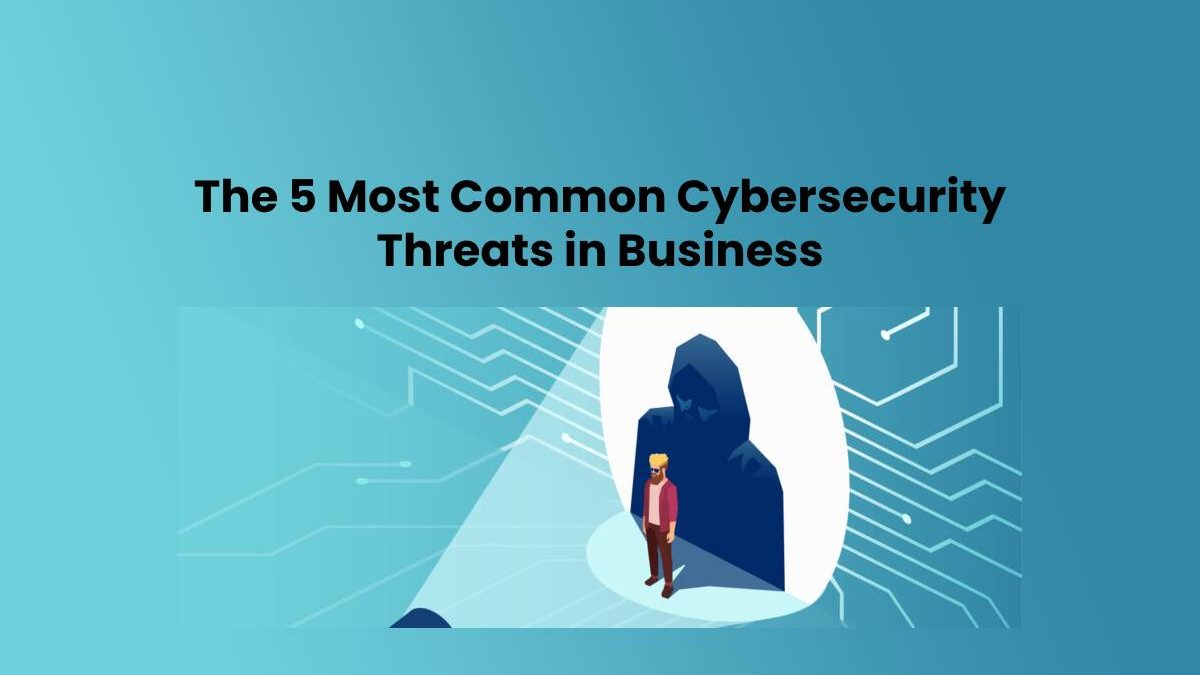The 5 Most Common Cybersecurity Threats in Business
Almost every organization today has a digital presence, from company websites and employee email servers, to customer relationship management systems and even something as regular as an e-payroll system. And all of these forms of digital real estate can be very vulnerable to cyberattacks if not properly protected.
So how do you start your journey to securing all of the digital real estate your business possesses? Well, you can start by knowing the forms in which cyberattacks can occur. It’s hard to protect something if you don’t know what you are protecting it from. So what are some of the most common forms of cyberattack that you can fall victim to?
Table of Contents
Top 5 Ways Cybersecurity Threats Can Occur
Awareness of the possible vulnerabilities in your digital infrastructure is the first step in implementing a digital security strategy. Here are some of the top five most common digital threats companies face today.
1. Malware
Malware refers to any software that carries out malicious actions on the host computer. Common forms of malware transmitted over the Internet include viruses, worms, and trojans. Malware ranges in severity from minor irritations, such as pop-ups, to serious problems such as ransomware and spyware programs.
What to Do
- Use a company-wide antivirus
- Run regular system checks for malware
- Update installed software as soon as possible
- Avoid opening email attachments and downloading strange files from untrusted parties and sites
2. Website Impersonation
Website impersonation involves stealing customer data by cloning your website and trying to direct customers to the fake website. This way, they can trick users into entering sensitive information such as birth dates or credit card details.
What to Do
- Use SSL certificates. An SSL certificate is a digital certificate that authenticates a website’s identity and enables an encrypted connection.
3. Denial-of-Service (DoS) Attacks
A denial-of-service attack occurs when your site is intentionally flooded and overwhelmed by multiple requests from malicious users, which brings down your site and makes it inaccessible to your users. Oftentimes, a large array of computers are used, in which case it is referred to as a Distributed Denial-of-Service (DDoS) attack. Such attacks can cripple your site, rendering it nonfunctional and inactive. This can lead to massive losses in revenue and user engagement.
What to Do
- Ensure your site is well built and maintained regularly
- Run regular security tests, to discover and repair any vulnerabilities
4. Password Attacks
Passwords are a major vulnerability in any cybersecurity system, and weak or leaked passwords can expose your sensitive information to tampering and/or theft, which could have significant adverse effects on your business activities. Password attacks can be carried out by brute-force techniques, or by social engineering and deception.
What to Do
- Use a company-wide password manager
- Change passwords regularly, and do not recycle old passwords
- Do not use the same password for different applications
- Use strong passwords, i.e. passwords that include uppercase and lowercase letters, numbers and symbols
5. Man-in-the-Middle Attacks
A man-in-the-middle attack involves stealing information that is being transmitted over an unsecured network. The malicious party is able to intercept communication between the network switch and the client’s computer. This communication might contain sensitive data such as passwords, credit card information, and birth/identity details, and poses a major threat to the company.
What to Do
- Avoid connecting to public networks such as those found in airports and cafes
- Use a virtual private network (VPN)
- Use SSL certificates on your site. An SSL certificate enables the TLS protocol on your site, which means that data is first encrypted before it is transmitted over the network. This helps to keep secret user data safe
Staying Safe on the Internet
Securing your internet presence is not a one-time task. You have to continuously stay up-to-date with the latest cyber threats and with the new solutions to secure your digital real estate. But for now, these are the most common types of attacks you’ll come across. Put into practice some of these tips and you’ll increase your online security. Good luck and stay safe!

